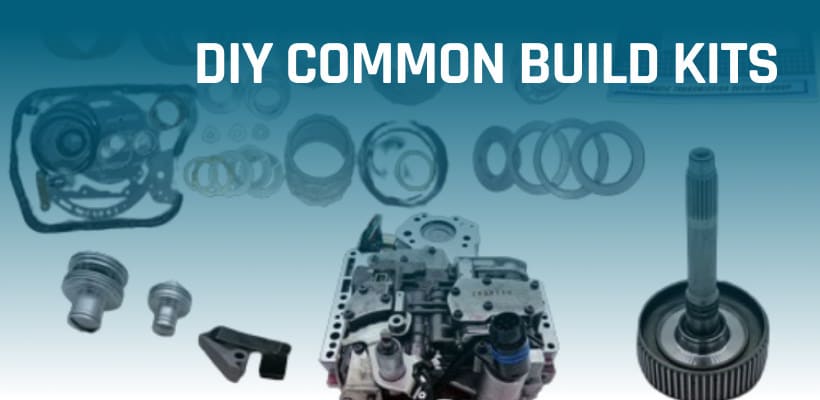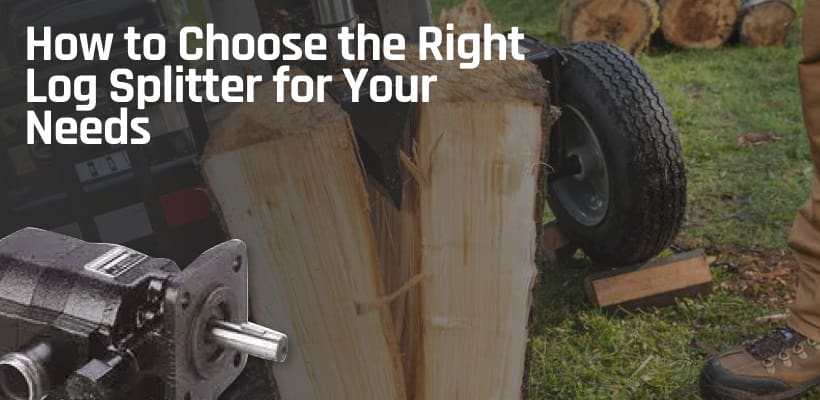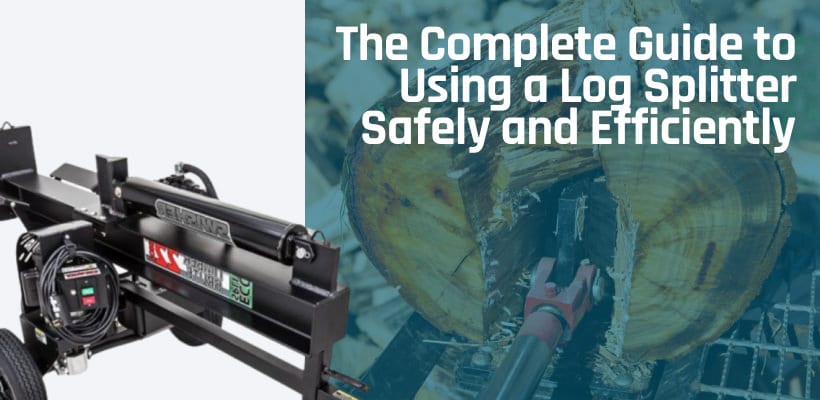
Building Your Own Log Splitter: A DIY Journey

Ever thought about crafting your own log splitter? It’s a fantastic project, especially if you regularly use firewood. Log splitters transform large logs into manageable pieces, a task that’s both essential and laborious. Imagine making this process more efficient and tailored to your needs. That’s what building your own log splitter offers.
At Northern Hydraulics, we’ve been in the hydraulics business since 1963. We’ve seen the evolution of tools and machinery and have helped countless customers with their DIY projects. Our expertise lies not just in providing the parts but also in guiding you through the journey of creating something useful, something you’re proud of.
Understanding the Basics of a Log Splitter
Log splitters are fascinating machines. They turn what used to be a tough, time-consuming task into something quick, easy, and even enjoyable. Let’s break down what a log splitter is and why building your own could be one of your most rewarding projects yet.
What is a Log Splitter?
So, what exactly is a log splitter? It’s a mechanical device designed to split logs into firewood efficiently. You might wonder, why not stick to the traditional axe? The answer is simple: speed, ease, and safety. A log splitter can handle what would take hours in a fraction of the time, with far less physical strain.
Log splitters come in various shapes and sizes. Some are large, industrial-grade machines designed for heavy use, while others are more suited for occasional, home use. The beauty of building your own is the customization – you can create a log splitter that perfectly fits your needs, whether you’re dealing with large logs regularly or just need a few firewood pieces now and then.
Types of Log Splitters
When it comes to log splitters, there’s a variety to choose from – each with its own perks. The three main types are manual, electric, and hydraulic.
- Manual Splitters: These are the simplest. They rely on your strength, but they’re more efficient than an axe. Great for small jobs, but they can be quite a workout!
- Electric Splitters: Need something more powerful but still want it easy to handle? Electric splitters are your go-to. They’re perfect for moderate use and are quieter than gas models.
- Hydraulic Splitters: The real powerhouses. These are what you see in industrial settings. They can handle big, tough logs with ease. If you’ve got a lot of wood to split, this is what you want.
Explore our wide range of hydraulic log splitter parts and accessories and find the perfect match for your needs at Northern Hydraulics.
Each type has its place, but imagine building one that’s just right for you. That’s where the DIY magic happens!
Benefits of a DIY Log Splitter
Why build your own log splitter? Three words: customization, cost-effectiveness, and satisfaction.
- Customization: Maybe you need something unique, like a splitter that can handle unusually large logs, or maybe you want a portable one. Building it yourself means you get exactly what you need.
- Cost-Effectiveness: Buying a high-quality log splitter can be pricey. But when you build it, you control the budget. You can pick and choose parts based on your wallet.
- Satisfaction: There’s something special about using a tool you built with your own hands. It’s not just about the money saved or the skills gained; it’s about the pride in creating something functional and efficient.
Preparing for Your DIY Log Splitter Project
Before you dive into building your log splitter, let’s talk about what you’ll need. It’s not just about gathering tools and materials; it’s also about planning and design. Doing this right will save you time and hassle later.
Tools and Materials Needed
Here’s a basic rundown of what you’ll need:
- Tools: Think drills, saws, hammers, and wrenches. Don’t forget safety gear like goggles and gloves.
- Materials: This depends on your design, but generally, you’ll need steel for the frame, a hydraulic cylinder, a control valve, and of course, a power source – be it an electric motor or a gas engine.
- Hydraulic Components: Since we’re focusing on a hydraulic splitter, you’ll need hydraulic hoses, a pump, and a reservoir for the hydraulic fluid.
| Item Name | Use |
|---|---|
| Steel Beams and Plates | To construct the frame and support base |
| Hydraulic Cylinder | For applying force to split logs |
| Control Valve | To control the hydraulic cylinder |
| Hydraulic Pump | To generate fluid pressure for the system |
| Hydraulic Hoses | For fluid transfer within the system |
| Welding Equipment | For assembling and securing the frame |
| Drill and Drill Bits | For making holes for assembly |
| Wrench Set | For tightening and securing components |
| Safety Gear (Gloves, Goggles) | For personal protection during work |
| Saw (Hand or Power) | For cutting materials to size |
| Measuring Tape | For precise measurement of materials |
| Hammer | For assembling and fitting parts |
| Fluid Reservoir Tank | To store hydraulic fluid |
| Bolts and Nuts | For securing components together |
| Power Source (Engine/Motor) | To drive the hydraulic pump |
You can find most of these at your local hardware store, or if you need specialized parts, we’ve got you covered at Northern Hydraulics.
Planning Your Design
Start with a sketch. It doesn’t have to be fancy – just a basic diagram to get your ideas down. Think about:
- Size: How big do you need your splitter to be? Consider the space you have and the size of logs you’ll be splitting.
- Power: This will determine the type of engine or motor you’ll need. More power means you can split larger logs, but it also means more complexity and possibly more cost.
- Safety Features: Always plan for safety. Think about where your hands will be, how you’ll move the logs, and what emergency measures you can include, like a quick-stop lever.
Remember, the better your plan, the smoother your build will go. And don’t worry if you’re not an expert – part of the fun is learning as you go!
Safety Precautions
Safety first, always! When you’re building a log splitter, you’re dealing with heavy materials and powerful forces. Here are some must-follow safety tips:
- Wear the Right Gear: This means safety glasses, gloves, and ear protection. Don’t take chances.
- Know Your Tools: Make sure you’re comfortable and familiar with every tool you use. Read manuals, watch tutorials, or ask someone experienced.
- Stay Alert: Keep distractions away. Focus is key when you’re working on something this important.
- Check Everything Twice: Whether it’s a bolt, a hose, or a weld, double-check it. Better safe than sorry.
Step-by-Step Guide to Building a Log Splitter
| Construction Phase | Estimated Time Commitment | Difficulty Level |
|---|---|---|
| Design and Planning | 2-3 hours | Moderate |
| Gathering Tools and Materials | 1-2 hours | Easy |
| Frame Construction | 3-4 hours | Moderate |
| Assembling Hydraulic System | 4-5 hours | Challenging |
| Installing the Engine | 2-3 hours | Moderate |
| Final Assembly and Testing | 2-3 hours | Moderate |
| Safety Checks and Adjustments | 1-2 hours | Moderate |
Step 1: Building the Frame
The frame is like the skeleton of your log splitter; it holds everything together. Here’s how to build it:
- Design Your Frame: Start with a sturdy design. Think about the size and weight it needs to support.
- Cutting and Welding: Cut your steel beams to size. Then, weld them together according to your design. Remember, precision matters.
- Reinforce: Make sure the joints are strong and the frame is stable. It’s going to handle a lot of force.
Step 2: Assembling the Hydraulic System
The hydraulic system is what powers your log splitter. It can seem complex, but take it step by step:
- Choose Your Components: Find a hydraulic cylinder, pump, and control valve that match your splitter’s size and power needs.
- Connect Them Up: Attach the cylinder to the frame. Then, connect the pump and valve using the hydraulic hoses.
- Test for Leaks: Before you go any further, check the system for leaks.
Step 3: Installing the Engine
Your engine is the heart of the log splitter. Here’s how to get it in place:
- Selecting the Engine: Pick an engine that suits your splitter’s size and the hydraulic pump’s specifications.
- Mounting the Engine: Secure the engine to the frame. Make sure it’s stable and aligned with the hydraulic pump.
- Connect the Engine and Pump: Hook up the engine to the hydraulic pump, following manufacturer guidelines.
Step 4: Final Assembly and Testing
Almost there! It’s time to put everything together and give it a test run:
- Assembly: Attach any remaining components, like handles or wheels.
- Safety Check: Go over every part again. Ensure everything is tight and secure.
- Test Run: Fire it up and test it with a log. Watch how it operates and listen for any unusual noises.
Remember, take your time. Rushing can lead to mistakes. Enjoy the process, and soon, you’ll have a log splitter that’s all yours – built by your own hands!
Troubleshooting and Maintenance Tips
Building your log splitter is just the start. Keeping it running smoothly and troubleshooting common issues are part of the ongoing journey. Let’s dive into some typical problems you might encounter and how to maintain your splitter to ensure its longevity.
Common Issues and Fixes
Every machine has its quirks, and DIY log splitters are no exception. Here are some common issues and how to fix them:
- Hydraulic Fluid Leaks: If you notice fluid under your machine, check all the connections. Tighten them if necessary. If a hose is damaged, replace it.
- Low Splitting Force: This might be due to low hydraulic fluid levels or air in the system. Check the fluid level and bleed the system to remove air.
- Engine Troubles: If your engine won’t start or runs poorly, check the basics first – fuel, spark plugs, and air filters. Sometimes it’s the simple things.
- Splitter Not Moving the Log: This could be a problem with the hydraulic cylinder or valve. Make sure they’re not damaged and are functioning properly.
When you face a problem, take a step back, think it through, and tackle it one piece at a time. Often, the solution is simpler than you think.
Regular Maintenance Practices
Regular maintenance can prevent a lot of headaches down the road. Here’s what you should regularly do:
- Check Hydraulic Fluid Levels: Before each use, make sure the fluid is at the right level. Top it off if it’s low.
- Inspect Hoses and Connections: Look for wear and tear on the hoses and ensure all connections are secure.
- Keep It Clean: After each use, clean off any debris or wood chips. A clean machine is a happy machine.
- Sharpen the Blade: A dull blade can make your splitter work harder than it needs to. Keep it sharp for efficient splitting.
- Store Properly: When not in use, store your splitter in a dry, covered area to protect it from the elements.
Remember, a little bit of maintenance goes a long way in keeping your DIY log splitter in top shape for years to come.
Additional Resources and Support from Northern Hydraulics
At Northern Hydraulics, we’re more than just a supplier of parts; we’re your partner in the DIY journey. Whether you’re building a log splitter from scratch or customizing an existing one, we’re here to support you every step of the way.
Expert Assistance and Parts
Need a specific part or a bit of advice on your log splitter project? We’ve got you covered. Our extensive inventory includes everything from hydraulic cylinders and pumps to control valves and hoses, perfect for any DIY design. And if you get stuck or have a question, our expert team is always ready to help. With decades of experience in hydraulic systems, we can provide guidance on both the technical aspects of your project and practical tips to make the process smoother.
Custom Solutions and Services
Every DIY project is unique, and sometimes you need something tailor-made. That’s where our custom solutions come into play. We can help you design and build a log splitter that perfectly fits your specific needs, whether it’s for heavy-duty industrial use or smaller, home-based projects. Our services include custom part fabrication, system design consultations, and expert advice on optimizing your log splitter’s performance.
Conclusion
Building your own log splitter can be an incredibly rewarding experience. It’s not just about ending up with a useful tool; it’s about the journey – the learning, the challenges, and the satisfaction of creating something with your own hands. Throughout this guide, we’ve covered everything from the basics of log splitters to detailed steps for construction, safety precautions, maintenance tips, and troubleshooting common issues.
We encourage you to embrace DIY projects like building a log splitter. It’s an opportunity to gain new skills, solve problems, and enjoy the satisfaction of DIY success. And remember, Northern Hydraulics is here to support you. Whether you need parts, advice, or custom solutions, we’re just a call or a click away.
So, are you ready to start your DIY log splitter project? Visit Northern Hydraulics for all your hydraulic needs. Let’s turn that vision into reality!
Ready to start building? See Northern Hydraulics Catalog for all your hydraulic needs!

















